Blog and Photos courtesy of Dennis Plank
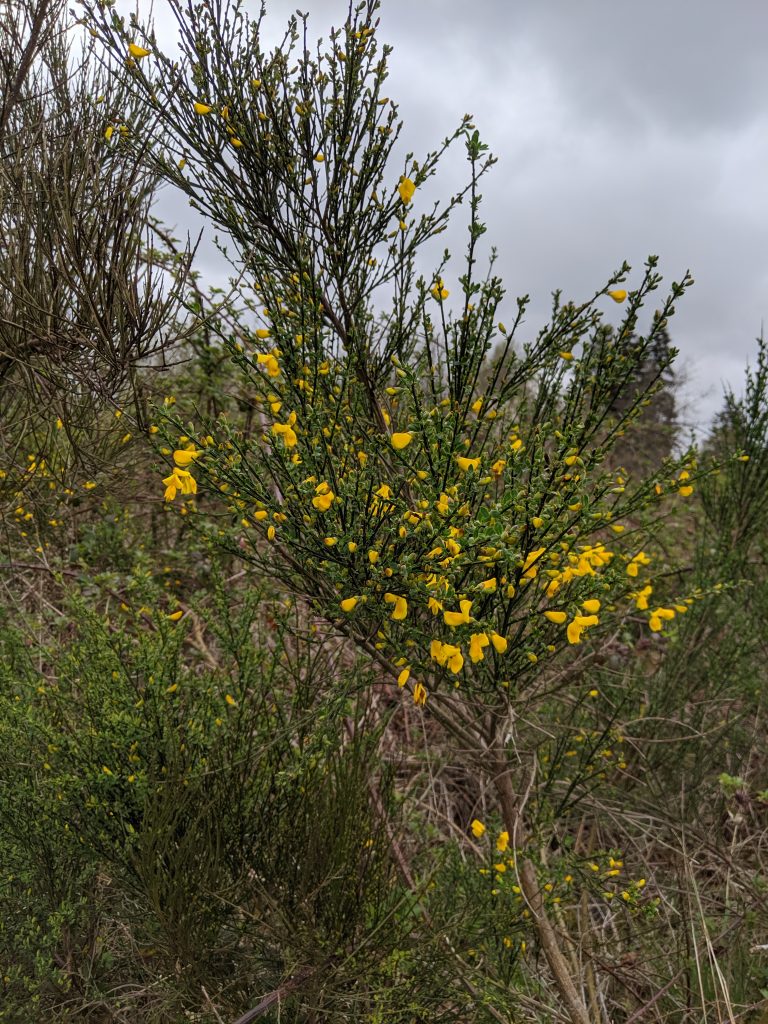
Scot’s (or Scotch) Broom, Cytisus scoparius
I started thinking about this post under the title of “Prairie Enemy Number 1”, but then I had to be a bit more honest about things and admit that the biggest enemy of our Western Washington Prairies is Homo sapiens via bulldozers, plows, asphalt, houses warehouses, etc, etc. Oddly, we are also the savior of the Western Washington Prairies and always have been. Without the fire regimes established by the First Peoples in this area, all of the prairies would have been long ago overcome by the forests. Douglas fir is a great prairie colonizer and after relatively few years changes the soil structure and chemistry tremendously, making it very difficult for a return to true prairie conditions. However, Scot’s Broom is an even more aggressive colonizer than Douglas Fir and is considerably more difficult to remove permanently.
The Washington State Noxious Weed control Board has listed this plant as a Class B Noxious Weed and they have this to say about it:
Family: Fabaceae
Other Common Names: broomtops, common broom, European broom, Irish broom, Scottish broom, Scot’s broom
Weed class: B
Year Listed: 1988
Native to: Europe
Is this Weed Toxic?:
livestock
Legal listings:
This plant is also on the Washington State quarantine list. It is prohibited to transport, buy, sell, offer for sale, or distribute plants or plant parts of quarantined species into or within the state of Washington or to sell, offer for sale, or distribute seed packets of seed, flower seed blends, or wildflower mixes of quarantined species into or within the state of Washington. Please see WAC 16-752 for more information on the quarantine list. For questions about the quarantine list, contact the Washington State Department of Agriculture’s Plant Services Program at (360) 902-1874 or email PlantServices@agr.wa.gov.
Click on the Scotch Broom Hyperlink above to get to their website for this plant.
Twenty odd years ago when I got involved in restoring the South Sound Prairies, the accepted knowledge was that the seed bank for this plant would last for twenty years after it was removed with new plants emerging every year. At the time we considered that very disheartening. Unfortunately, the current estimate is that the seed bank will persist for eighty (80) years or more. That is a long time to be pulling this plant on one’s property, even assuming he neighbors are controlling it on their side of the fence. My wife and her ex started vigorously controlling it on our property in 1997 and there hasn’t been a plant allowed to produce seed on the property since. We still pull plants three or four times a year, though it’s down to a half-hour exercise to do so. We were very lucky in that The Nature Conservancy around 2005 or so had a Land Owner’s Initiative program to help control this plant and restore small parcel prairies. My wife (we weren’t married yet) jumped on it and they sent a crew out to mop the tops of the Scotch Broom with an herbicide after nearly all the other prairie plants had senesced. This was very effective, though it’s a process that has since been discontinued. Since then, hand control has been sufficient.
This is what an undeveloped parcel two lots down that has never been maintained looks like:
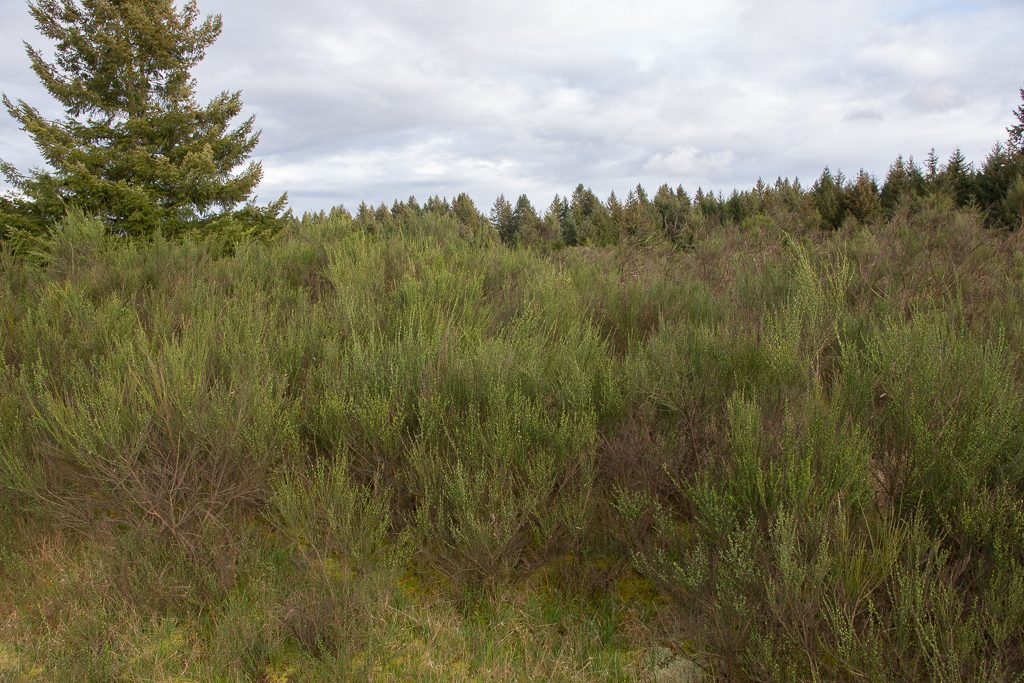
The Broom is well over head height.
And this is what fifty acres set aside for conservation as part of a development agreement looks like:
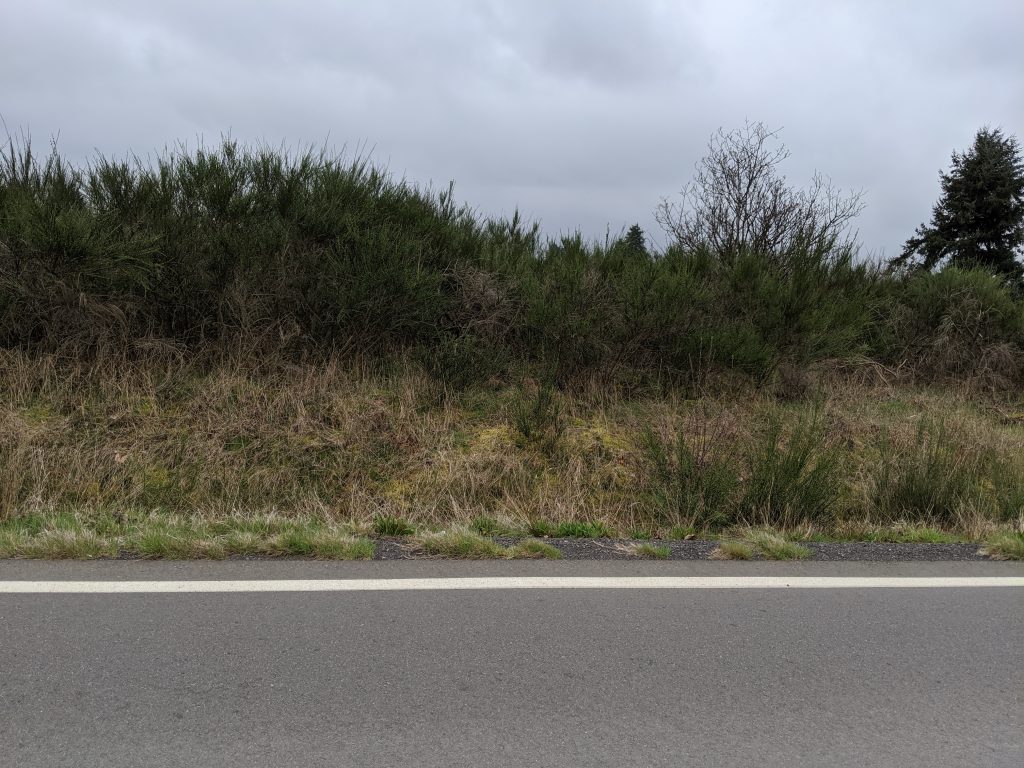
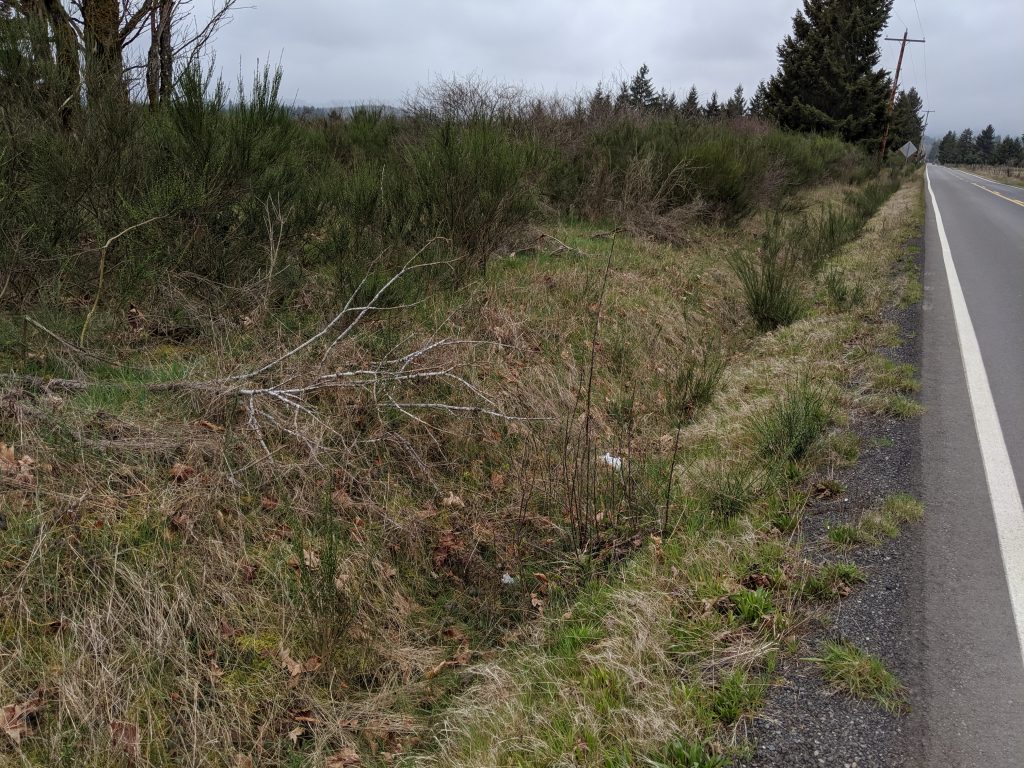
In addition to covering the prairie so densely and shading out most of the native prairie plants, Scot’s Broom is somewhat allelopathic, so it suppresses other plants from growing and the toxins can remain in the soil for some time. Some people advise that pulled broom be removed and taken to a landfill for this reason, and we do this for the few plants we pull from our property. Unfortunately, this is not a viable option when controlling a property of any size, like Thurston County’s Glacial Heritage Nature Preserve.
In the mid-1990’s when people started doing restoration on Glacial, it looked just like the two properties above, except there were about 700 of the approximately 1000 acres covered with it (the rest of the preserve is forest). Initial control was with Brush cutters (weed whackers with a table saw blade), followed by periodic mowing. As the brush cutting phase was completed, volunteers started handling the regrowth with Weed Wrenches and this transition is about the time I became involved.
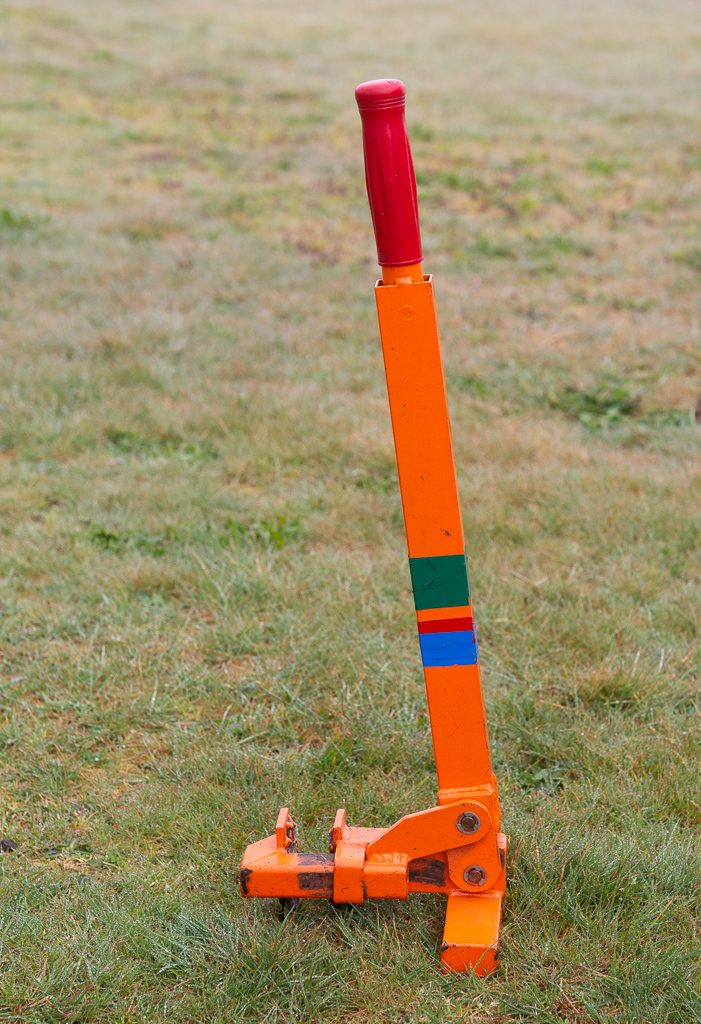
Unfortunately, the Weed Wrench Company ceased business a few years ago. One of their former employees has started his own company selling some of the large versions of the original Weed Wrench and his own design the Uprooter. Alternatives to this design are the Pullerbear and the Extractigator.
Luckily, The Nature Conservancy followed by the Center for Natural Lands Management have been able to employ alternative control measures such as limited herbicide application and controlled burns to help control the Scot’s Broom on Glacial Heritage and other Prairie preserves. I well remember the day that we volunteers were told that we’d finally gotten 40 acres under hand control and later 100 acres. Unfortunately, by some fluke of good luck we had a large group of dedicated volunteers at the time. Many of those have aged out or moved away and the current volunteer force is considerably reduced. I would urge anyone reading this blog to come and help us with our restoration efforts on the second Saturday of every month or any Tuesday. Just send an email to ssvolunteers@cnlm.org and they’ll put you on their volunteer newsletter list. For those afraid of getting inundated with emails, CNLM isn’t one of those organizations. You’ll just get one newsletter per week outlining the next week’s volunteer activities.
For those who doubt that good can happen when enough people get involved, this is what Glacial Heritage looked like a couple of springs ago.
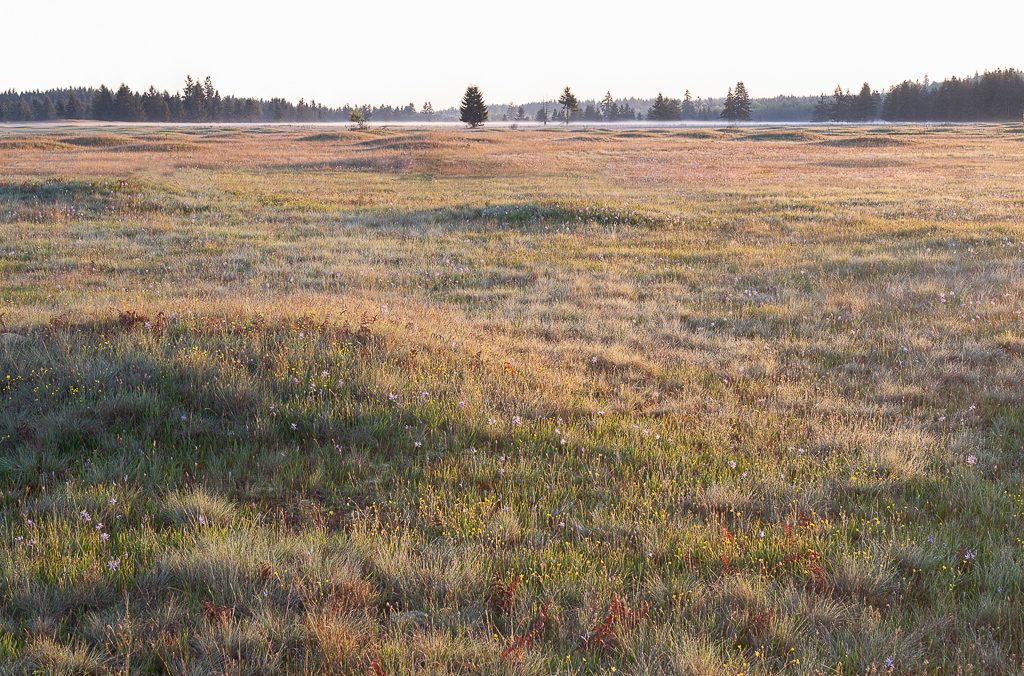
So come on out and pull some Broom with us! (As soon as we can have workdays again).

